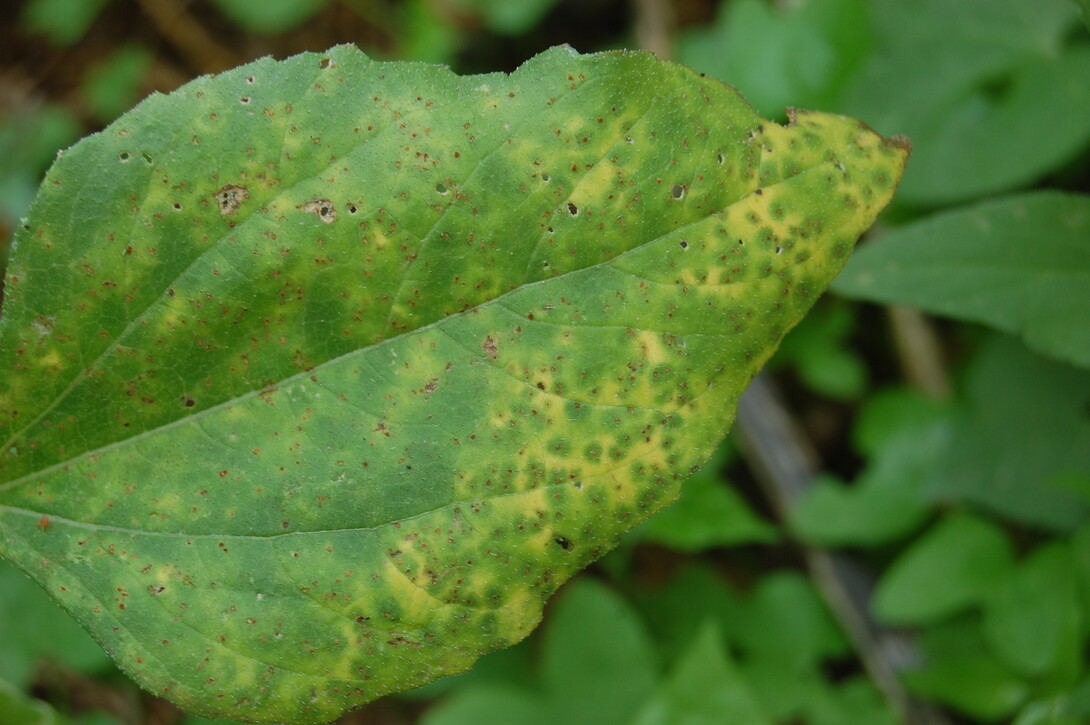
Lincoln, Neb. —Rusts are plant diseases caused by highly diverse pathogenic fungi that can affect many different kinds of plants. Most crops grown in Nebraska can be affected by a rust disease, but fortunately, we do not suffer disease problems every year.
Disease incidence and severity are strongly correlated with several major factors, including the severity of the previous winter and temperatures and moisture the following spring.
This year, conditions since May have been conducive to disease development. This, along with observation of rust infections in volunteer sunflowers, is a signal that dry edible bean producers in western Nebraska should be alert to the possibility of rust infections in dry bean crops this year earlier than usual, and should scout bean fields early.
Most rust pathogens in Nebraska do not generally overwinter here unless we have a mild winter. They survive in warmer areas of the country like southern Texas and move north in summer through wind currents. If they do survive over the winter in certain areas of Nebraska, they are obviously more capable of early infections that spring and summer, resulting in greater economic losses if not timely noticed and treated.
Although there are approximately 7,000 species known, the rust fungi are highly specialized plant pathogens. Each species has a narrow host range and cannot infect or be transmitted to non-host plants. For example, sunflower rust cannot affect dry beans and bean rust cannot cause disease in sunflowers. These two rust diseases are commonly found in Nebraska production fields, but often appear late enough in the season that serious economic losses are avoided. Nevertheless, both pathogens are still very similar, possessing several related and important characteristics.
Pathogen Life Cycle
The pathogens causing sunflower and dry bean rust both have a very complex life cycle consisting of five distinct spore stages – all of which occur on their respective host. There are no alternate hosts like those found with the wheat rust diseases.
The most commonly observed spore stage for both pathogens consists of reddish-brown, cinnamon-colored pustules, called uredinia, which are about 1/8 inch or smaller and contain thousands of microscopic spores called urediniospores. These “rust-colored” spores are the origin of the disease name and generally develop in Nebraska in mid to late summer. This stage of the cycle is also called the “repeating stage” because it can repeatedly infect new leaves and plants throughout the season if conditions remain conducive.
Furthermore, both diseases require similar environmental conditions for spore germination, infection and disease progression, including prolonged periods of standing water on leaves (minimum of two to three hours) and cool to moderate temperatures (70-85 degrees Fahrenheit).
Early Infections Observed in 2020
In late May of this year, I found volunteer and wild sunflower plants in several locations around Scottsbluff infected and showing symptoms of the early stages of the rust disease. As of June 20, the most damaging spore stage, the reddish-brown urediniospores, were found profusely distributed over all leaves of volunteers.
Although this sunflower disease and its pathogen will not damage the dry bean crop, its appearance on sunflowers indicates that it is possible to additionally see early infections on young, newly emerging dry bean crops due to favorable environmental conditions.
Implications for Bean Rust in 2020
This report is not meant to frighten, but to bring attention to the possibility for infections and epidemics occurring in dry bean crops much earlier than we are accustomed to. If pockets of the dry bean pathogen survived over this last winter, conditions since May have been conducive for disease development, as witnessed with the recent sunflower rust infections.
Just be aware of this prospect and scout fields early, particularly fields near those cropped to dry beans last year in 2019. Early infections will likely require some form of fungicide treatments before harvest. As always, please contact me or the Panhandle REC with any questions or if you have any plant samples for disease diagnosis.







